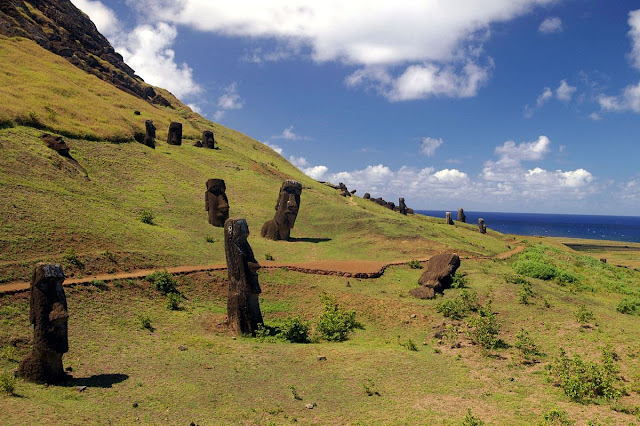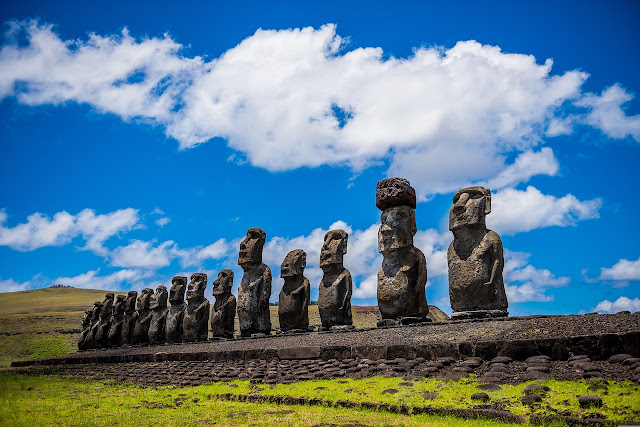The Mysteries of Easter Island
Although this island is remote and requires extra effort to visit it, your fatigue will pay off when you are here.
On Easter Island, you can see nearly 900 primitive sculptures carved by early Polynesians. These statues called moai were carved about 1,000 years ago, and seeing them in person is an experience of a lifetime that you will never forget. Even so, there are many interesting facts about Easter Island.
According to the index from the United Nations (UN), Easter Island is the most isolated inhabited island in the world.
Easter Island It is located in the southeast of the Pacific Ocean, and the nearest country to this island is Chile. Easter Island has been in Chile since 1888.
Origin of The Name Easter Island
A Dutch admiral, Jacob Roggeveen, is said to be the first European to land on Easter Island on Easter Sunday in 1722.
According to the time of his arrival, Roggeveen gave the name of the island as Paasch-Eyland, which in Dutch, means Easter Island.
Besides being known as Easter Island, this area has another name, namely Rapa Nui, which is still used by the local population. However, whether the name is the original name of this island is still a debate. Others believe that the name Rapa Nui was given by slave robbers from Peru in the mid-19th century. Previously, this island was believed to have the first name Pito O Te Henua or navel of the world.
Easter Island Civilization
According to history, recorded the arrival of Hotu Matu'a in the 1200s and Jacob Roggeveen 500 years later, making the population on Easter Island grow.
It is known that there were around 10,000 people who settled over the years. However, the population decreased to around 2,000-3,000 people. This is due to deforestation and the erosion of volcanic soils, resulting in decreased fertility.
The population also continued to decline following the arrival of Europeans. Dissension between social groups causes housing to be burned, leading to starvation and the emergence of homelessness.
In addition, there were raids by Peruvian slave traders, plagues, and emigration, so that by 1877 only 111 people were left on Easter Island.
In 2020, quoted from CNBC, it was recorded that there were around 5,700 residents on this island.
Moai at Easter Island
The basic material for the statues or moai on Easter Island is tuff or volcanic ash that is compacted. This ash can be found in the crater area of Rano Raraku volcano on the island.
As a soft rock, tuff can easily be shaped by hand or chiseled stone, the finished sculpture was then carried from the crater area to around Easter Island, but unfortunately the story of this creation is based solely on oral information that has been passed down from generation to generation.
Until now there have been no concrete clues as to how the statues on Easter Island were transported, as many of the statues were partially buried, and the heaviest was 82 ton.
The Meaning of Moai
The inhabitants of Easter Island carved the huge stone statue to represent the face of their ancestors.
The reason why the statues were facing inward was to show protection for each other. Some moai have the shape of a hat on the head, which is a symbol of power, and others represent hair.
Initially, there were thousands of statues of moai, but before the island was made a UNESCO World Heritage Site in 1995, many of the statues were taken by collectors. Moai themselves can also be found in a number of museums around the world, the most famous of which are the Louvre in Paris, France, and the British Museum in London, England.
How to Go to Easter Island
For travelers who want to visit Easter Island, the only way is to take a plane, because there is no port in this place.
The island has a small airport called Mataveri, and there is only one airline that serves flights to the island, namely LATAM.
Mataveri Airport was built by NASA as a shuttle emergency line. The shortest flight duration to Easter Island is around five hours via Santiago Airport in Chile. Meanwhile, if you fly from Tahiti in French Polynesia, the duration is around seven hours.



No comments:
Post a Comment